The Fed’s balance sheet peaked at $9 billion in April 2022. Today, after two years of Quantitative Tightening (QT), it has fallen to $7.2 trillion. When the Fed embarked on QT, its goal was to “normalize” its balance sheet. At the time, the St. Louis Fed claimed the purpose of QT was:
“This policy, termed balance sheet “normalization” or “quantitative tightening” (QT), is designed to drain excess liquidity from the banking system. QT is the opposite of quantitative easing (QE).”
Today, after a healthy dose of QT, the Fed’s balance sheet is still far from normalized. It is over $5 trillion larger than in 2008 when Ben Bernanke promised that the initial round of QE was a temporary measure to stabilize the economy and markets.
Might today’s and many continued rounds of QT normalize the Fed’s balance sheet? We doubt it, and so does the Fed. In our latest article, Fiscal Dominance Is Here, we discuss the bind the Fed is in and how they must enact monetary policy with the massive Federal debt load in mind. Powell will never admit that monetary policy is beholden to the nation’s debt. However, the Fed does. The graphs below from the Fed project its SOMA account, which holds their bonds, will grow by 8-10% a year starting in 2025. The Fed and Treasury have no choice if deficits continue!

What To Watch Today
Earnings

Economy

Market Trading Update
The market is poised to move higher again today if the CPI report confirms what the market is expecting – cooler inflation. With Jerome Powell heading into the FOMC meeting at the end of the month, the recent spat of weaker data has hopes mounting that the Fed could cut rates in July. That hope was recently underpinned by comments from Powell that he doesn’t want to wait too long to cut rates and risk undermining economic growth. That risk is clearly reflected in consumer interest payments (non-mortgage) as a percentage of disposable income, which has risen sharply. The longer high borrowing costs remain, the risk of a recessionary draw down increases.
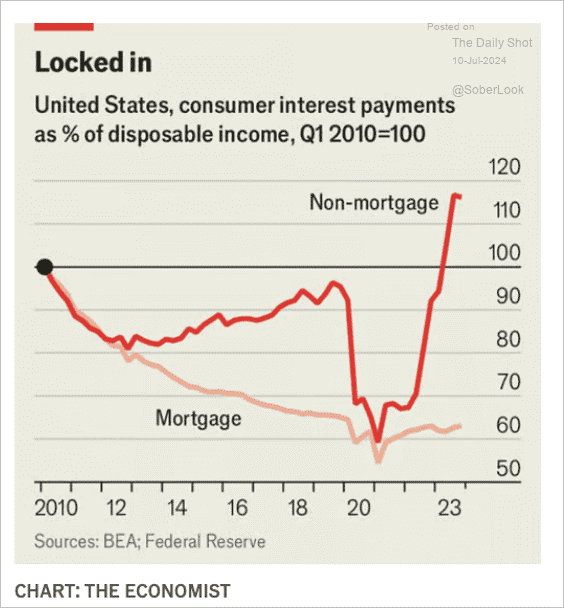
Do not dismiss that risk. When it comes to the financial market, investors are chasing a handful of stocks higher based on expectations of exponential earnings growth in the future. However, a recessionary onset will undermine those expectations as earnings fall and valuations reset. As shown, the last time that the largest 7-stocks outperformed the rest of the market to such a degree was heading into the “Dot.com” bubble. While this time is indeed different, it is unlikely that it is different enough to create infinite earnings growth.
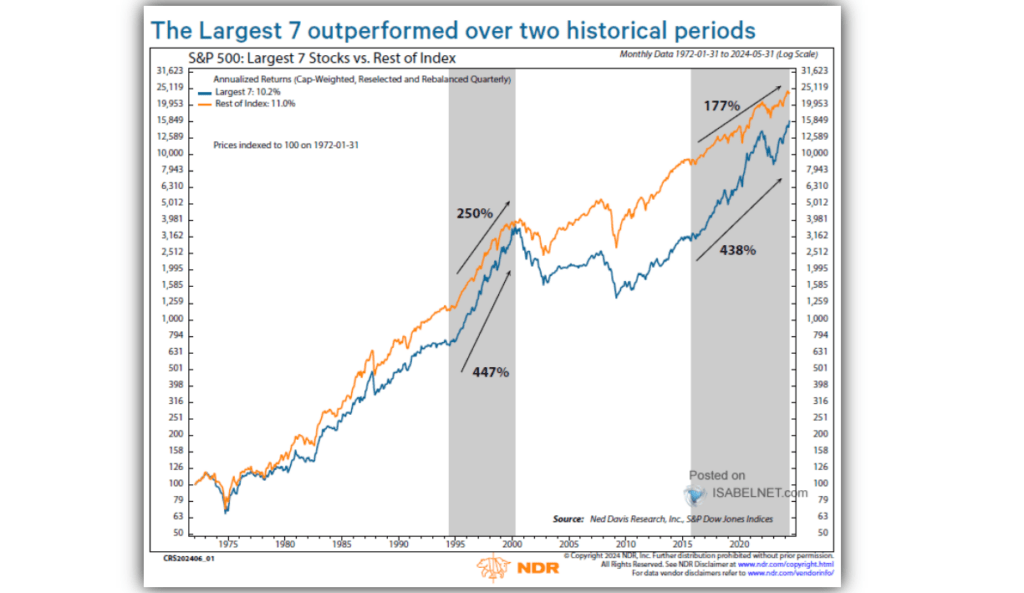
While we remain long equities in our portfolio currently, as we will discuss in this weekend’s newsletter, we are starting to aggressively research multiple hedging strategies to reduce portfolio risk heading into the end of summer. Such a move certainly seems prudent.

Forward Earnings Projections Appear Optimistic
Corporate earnings tend to be well correlated with economic activity. Also, as the graph below from Yardeni Research shows, forward earnings correlate well with current economic growth. Keep in mind that forward earnings are forecasts, not actual earnings. Recently, as Yardeni highlights with the yellow arrows, forward earnings expectations have been rising while the GDP growth rate has been declining. Therefore we must ask, can earnings expectations continue increasing if the economy slows beyond the natural growth rate? We doubt it, but never rule anything out in this market.
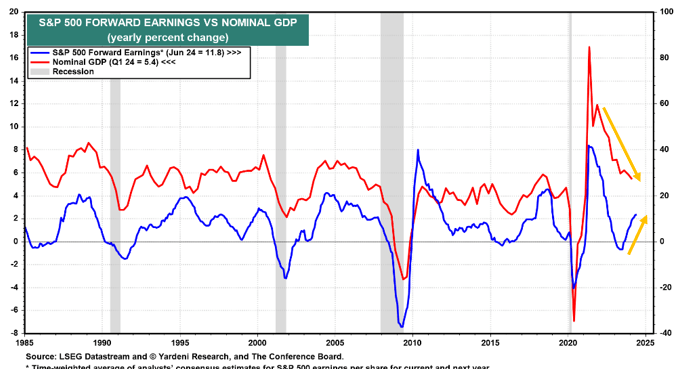
More On Construction Employment
Yesterday’s Commentary touched on the significant jump in construction worker layoffs in the latest Challenger report. We track the sector closely because construction jobs have played a significant role in the robust job market. And as you know, the strong labor market is one reason the Fed is apprehensive about cutting interest rates.
The graph below, courtesy of CoStar, warns that the Challenger warning may not be a one-month anomaly. As measured in square footage, the amount of new commercial projects getting underway has plummeted from over 200 million square feet to just over 50 million. Such is the lowest since the aftermath of the financial crisis.
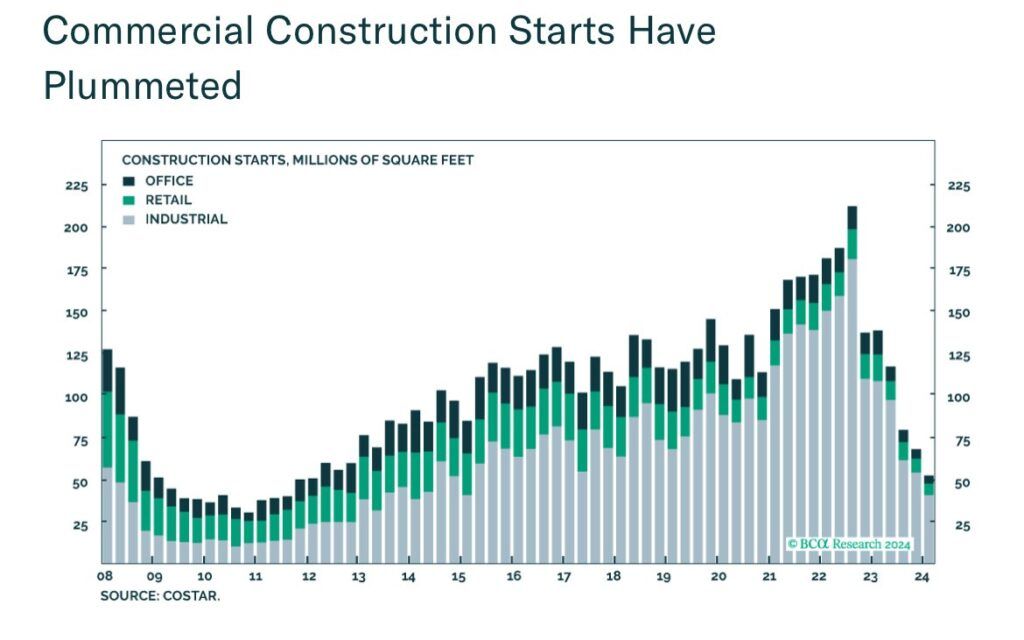
Tweet of the Day
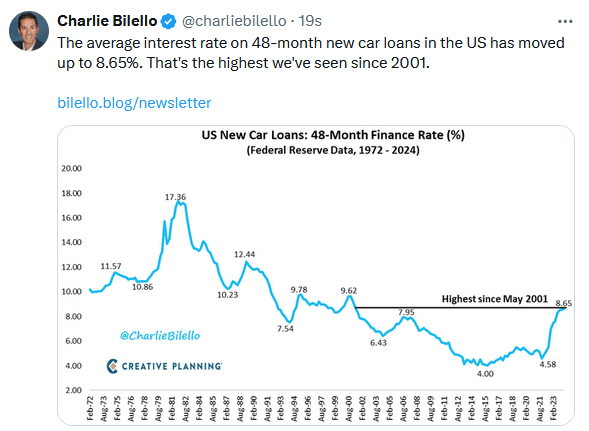
“Want to achieve better long-term success in managing your portfolio? Here are our 15-trading rules for managing market risks.”
Please subscribe to the daily commentary to receive these updates every morning before the opening bell.
If you found this blog useful, please send it to someone else, share it on social media, or contact us to set up a meeting.

















